34 Fast & Yummy Goat Dishes to Jazz Up Your Table
Goat meat offers a culinary adventure that tantalizes taste buds with its rich, distinctive flavor profile.
Cultures worldwide have embraced this versatile protein for centuries, transforming simple ingredients into extraordinary meals.
Lean and nutritious, goat dishes represent a global gastronomic journey that challenges traditional meat expectations.
Passionate chefs appreciate its unique texture and ability to absorb complex marinades and spices.
Nutritionists recognize goat meat as a healthier alternative to more common protein sources, packed with essential nutrients.
Regional cooking techniques elevate this meat from ordinary to extraordinary, creating memorable dining experiences.
Innovative recipes showcase the incredible potential of goat cuisine across different culinary traditions.
Your appetite will be piqued by these 34 remarkable goat dishes that promise delicious exploration:
Top Goat Dishes for Adventurous Eaters
Goat meat takes on bold flavors and tender textures in kitchens worldwide. Whether slow-cooked with spices or roasted over a flame, these dishes offer an adventure for curious palates and food lovers alike.
Seco De Cabrito
Seco de cabrito represents a classic Peruvian stew bursting with intense flavors from tender goat meat slow-cooked in a rich cilantro sauce.
Mountain regions in Peru first developed this hearty dish, which now spans coastal areas with its robust culinary tradition.
Spicy hot peppers, peas, and carrots complement the marinated meat, creating a complex flavor profile.
Cooks season the meat with cumin, garlic, oregano, and traditional spices before frying and simmering it to perfection.
Onions and aromatic herbs contribute depth to the thick, fragrant sauce that defines this iconic meal.
Rice, beans, and boiled cassava traditionally accompany the stew, making it a complete and satisfying one-dish experience.
Family celebrations often feature seco de cabrito as a centerpiece meal.
Reheating the dish the next day intensifies its rich, layered flavors.
Tassot
Tassot represents a cherished Haitian meat delicacy featuring cubed goat or beef marinated in zesty citrus juices and onions before being deep-fried to achieve a crispy, golden-brown exterior.
Skilled Haitian cooks transform the meat through a careful marinading process that infuses rich, tangy flavors into each tender bite.
Orange and lemon juices create a bright, acidic base that tenderizes the meat while adding complexity to its taste profile.
Spicy ti malice sauce provides an additional layer of heat and flavor that complements the meat's robust character.
Traditional preparation methods highlight Haiti's culinary creativity and resourcefulness in transforming simple ingredients into a memorable meal.
Salt, pepper, and occasional herbs enhance the meat's natural flavors during marination.
Generations of Haitian families have enjoyed this iconic dish as a celebration of their cultural cuisine.
Birria
Birria electrifies Mexican cuisine as a deeply flavorful slow-cooked meat stew originating from Jalisco's culinary traditions.
Mexican street vendors traditionally prepare this hearty dish with goat, though beef, lamb, mutton, and chicken variations exist.
Roasted chili peppers, garlic, cumin, bay leaves, and thyme infuse the meat with complex spice profiles during slow cooking.
Street stands called birrierias serve birria exclusively in morning hours, capitalizing on its reputation as an exceptional hangover remedy.
Regional cooks carefully tenderize meat through extended braising, ensuring melt-in-your-mouth textures.
Historically, the term "birria" colloquially meant "mess" or something of inferior quality, reflecting its working-class roots.
Jalisco's culinary landscape embraces this transformative dish as a testament to resourceful cooking techniques.
Generations have celebrated birria's rich, robust flavors that showcase Mexico's deep gastronomic heritage.
Cabrito
Cabrito represents a succulent roasted goat kid specialty originating from Monterrey, Mexico, with deep roots across Latin America and Spain.
Strict culinary traditions demand young goats no older than three weeks, exclusively nourished by mother's milk for optimal flavor development.
Authentic preparation methods include al pastor (spit-roasted without seasonings), al horno (oven-roasted), en sangre (braised in blood with offal), and en salsa (braised with tomatoes, garlic, onions, and chilis).
Spanish and Portuguese settlers likely introduced this technique to Mexico, creating a lasting gastronomic tradition.
Monterrey remains the most famous location for this protein-packed dish, attracting meat lovers nationwide.
Outdoor grilling and family gatherings often feature this beloved meat preparation.
Chanfana
Chanfana represents a robust Portuguese stew made from goat or lamb meat slow-cooked in clay pots with distinctive wine-based preparation.
Red wine saturates tender meat seasoned generously with paprika, garlic, bay leaves, and piri-piri peppers.
Portuguese central region warriors reportedly created this dish during French invasion in early 19th century.
Coimbra specifically became known for perfecting this traditional preparation method.
Baking allows meat to become incredibly soft and absorb complex flavor combinations.
Wine transforms tough meat into succulent, rich protein centerpiece.
Regional cooking techniques ensure deep, multilayered taste profile.
Generations have preserved this rustic recipe as authentic Portuguese culinary heritage.
Ecuadorian Goat Stew (Seco De Chivo)
Seco de chivo represents Ecuador's hearty goat stew with deep cultural roots and complex flavor profiles.
Goat meat slow-cooks in a rich sauce blending beer and fruit juices, creating an intensely savory meal traditionally served during celebrations.
Spanish colonial influences shaped this dish's preparation methods and ingredients.
Ecuadorian families gather around steaming plates of tender meat swimming in aromatic liquid.
Home cooks typically accompany the stew with yellow rice or fried plantains.
Beer and fruit juices tenderize the meat while adding depth to the sauce.
Generations have passed down this recipe, preserving a delicious piece of Ecuadorian culinary heritage.
Chivo Guisado
Chivo guisado dominates Dominican cuisine as a robust goat stew infused with wild oregano and intense Scotch bonnet peppers that transform local goat meat into an extraordinary culinary experience.
Wild oregano from goats' natural grazing gives this dish its signature deep flavor profile.
Dominican kitchens slow-cook tender goat pieces with bitter oranges, onions, garlic, and tomatoes to create a rich, complex meal.
Scotch bonnet peppers add significant heat and complexity to the stew's overall taste.
Meat selection matters greatly, with free-range goats providing more intense flavors.
Chenchen, a traditional cracked corn pilaf, serves as the perfect accompaniment to this hearty stew.
Tengkleng
Gulai kambing is a traditional Indonesian goat stew from Surakarta, Java, featuring slow-cooked goat bones in a rich, spiced coconut milk broth.
Dutch colonial rule influenced its origins, with poor communities transforming leftover goat bones into a flavorful meal.
Turmeric, galangal, lemongrass, cumin, coriander, garlic, and onions infuse the thin broth with complex, aromatic layers.
Some regional variations include goat innards for added depth and texture.
Coconut milk creates a smooth, creamy base that balances the robust meat flavors.
Indonesians enjoy gulai kambing as a warming, satisfying dish that reflects resourceful cooking traditions.
Served with rice, this stew offers a comforting and hearty meal that celebrates local culinary ingenuity.
Buryan Kebab
Buryan kebab is a traditional Turkish meat preparation method involving whole goat or lamb slow-cooked in an underground wood-fired well sealed with mud or ash.
Originating from eastern Turkey's Bitlis and Siirt provinces, this unique cooking technique allows meat to steam and roast simultaneously inside a deep pit.
Two regional variations exist: Bitlis buryan uses male goats, while Siirt buryan permits goat or lamb selections.
Minimal seasoning involves only rock salt, preserving the meat's natural flavors.
Cooks carefully position meat either hanging or in a cauldron within the well during cooking.
Customers can request specific meat preferences like bone-in or boneless and fatty or lean cuts.
Restaurant servers traditionally present the tender meat atop fresh pita bread.
Diners savor this centuries-old cooking method that transforms simple ingredients into a rich, smoky delicacy.
Patatato
Patatato crowns Amorgos island's culinary landscape as a rustic Greek stew combining tender goat or lamb meat with potatoes in a robust tomato sauce.
Mediterranean olive oil, red wine, and aromatic spices like cinnamon and allspice infuse deep, complex flavors into this traditional dish.
Slow-cooked ingredients meld together, creating a rich and hearty meal that reflects generations of Greek island cooking traditions.
Onions and garlic provide a savory base while the meat becomes incredibly tender during extended cooking.
Families gather around steaming plates, sharing stories and enjoying generations-old recipes.
Mountain herbs and fresh local ingredients elevate the stew's authentic taste.
Generations have passed down this beloved recipe, preserving Amorgos' unique culinary heritage.
Boodog
Boodog is a Mongolian roasting technique that transforms whole goats or marmots into a unique culinary experience by cooking meat inside its own skin with heated stones.
Skilled herders select smooth, round stones to place strategically within the animal's body, with smaller stones tucked into upper legs and larger ones filling the abdominal cavity.
Mountain dwellers carefully prepare the meat by stuffing it with potatoes and onions before sealing the skin tightly.
Hot stones rapidly cook the meat from the inside, ensuring even heat distribution and preserving natural flavors.
Wild game hunters and nomadic communities traditionally prepare this dish during special gatherings.
Salt and minimal seasoning enhance the meat's natural taste.
Mongolian families consider this roasting technique a cherished method of preparing wild game during celebrations.
Maranho
Maranho, a distinctive Portuguese sausage-like delicacy from Serta's Beira Baixa region, ingeniously stuffs seasoned goat meat, chourico, dry-cured ham, rice, and mint inside a cleaned goat stomach.
Rural Portuguese communities developed this hearty specialty as a resourceful way to use all parts of a butchered animal.
Regional shepherds likely created the dish during the 19th century as a portable, protein-rich meal that could sustain them during long days tending flocks.
Portuguese culinary traditions emphasize using every ingredient with respect and creativity.
Traditional preparation involves carefully cleaning the stomach, mixing meats with rice and herbs, and sewing the mixture inside the natural casing.
Skilled butchers and home cooks take pride in crafting each maranho with precision.
Restaurants and local festivals now celebrate this unique gastronomic treasure that represents centuries of Portuguese culinary innovation.
Regional food enthusiasts consider maranho a testament to Portugal's rich agricultural heritage.
Kari Kambing
Kari kambing represents a spicy goat curry bursting with intense Malaysian and Indonesian flavors, featuring tender chunks of goat meat slow-cooked in a rich coconut milk-based sauce.
Robust spices like galangal, turmeric, and lemongrass create a complex flavor profile that distinguishes this dish from other regional curries.
Ginger, chili peppers, and curry leaves add deep warmth and aromatic complexity to the meat's natural richness.
Potatoes and tomatoes provide additional texture and balance to the spicy sauce.
Onions help build a strong foundational taste that complements the goat's intense meat flavor.
Traditional cooking methods involve simmering ingredients together to develop a deeply layered taste experience.
Home cooks and restaurant chefs prepare this curry as a popular main dish served with steamed rice.
Fah-Fah
Fah-fah stands as a hearty Djiboutian soup brimming with rich cultural significance and robust flavors.
Goat meat forms the protein foundation of this traditional dish, complemented by fresh vegetables like cabbage, kale, leeks, and potatoes.
Hot peppers and coriander provide a spicy kick that elevates the soup's complex taste profile.
Garlic and onions contribute deep, aromatic undertones that enhance the overall savoriness.
Cooks carefully prepare fah-fah by placing all ingredients into a large pot and covering them with water.
Slow simmering allows ingredients to meld together, producing a comforting and nourishing soup.
Curried Goat And Pigeon Peas
Curried goat and pigeon peas rank as Trinidad and Tobago's most celebrated meat stew, blending Caribbean culinary traditions with Indian immigrant influences.
Tender goat meat transforms into a rich, spicy dish through slow cooking with aromatic curry powder and fiery hot peppers.
Onions, garlic, and complex spice mixtures create deep layers of flavor in this hearty meal.
Caribbean cooks cube fresh goat meat and simmer it with pigeon peas until perfectly tender.
Traditional preparation involves browning meat with curry powder before adding vegetables and liquid.
Home kitchens and restaurants across Trinidad serve this iconic stew as a staple lunch or dinner option.
Coconut milk sometimes enriches the sauce, adding creamy depth to the spicy mixture.
Kapamas
Kapamas represents a distinctive Greek Easter meat specialty from Rhodes, featuring a whole kid goat meticulously stuffed with rice, onions, tomatoes, and parsley.
Pine nuts, raisins, cinnamon, and cloves infuse the meat with complex flavors and aromatic depth.
Locals carefully prepare this traditional dish by filling the goat with a carefully balanced mixture of ingredients.
Wood fire ovens transform the meat through an extended slow-cooking process beginning on Holy Saturday afternoon.
Families gather to roast the stuffed goat, which emerges tender and richly seasoned on Easter Sunday.
Generations have maintained this culinary ritual as a cherished holiday celebration.
Served piping hot, kapamas embodies Rhodes' deep-rooted gastronomic heritage.
Gida Vrasti
Gida vrasti embodies Greek rustic cuisine through slow-cooked goat meat braised with simple vegetables and herbs in a traditional one-pot method.
Mountain shepherds originally developed this hearty stew as a practical meal using readily available ingredients like goat meat, potatoes, carrots, and onions.
Greeks prepare the meat by first boiling and draining it to reduce fat, then returning it to a fresh water broth with aromatic herbs such as bay leaves and oregano.
Garlic and celery enhance the meat's rich flavor profile, while lemon juice added near the end brightens the entire dish.
Mediterranean cooking techniques shine through this uncomplicated yet flavorful preparation method.
Home cooks across Greece cherish this traditional recipe as a connection to rural culinary heritage.
Chivo Lechal Malagueno
Chivo lechal Malagueno highlights Spain's southern culinary traditions with its succulent roasted suckling goat from Malaga province.
Young goats raised in specific regional conditions provide exceptionally tender meat infused with Mediterranean herbs and spices.
Marinating transforms raw meat into a rich flavor profile through garlic, thyme, and oregano seasoning.
Olive oil and white wine contribute depth to the dish's complex taste.
Traditional preparation involves slow roasting in earthenware dishes for approximately one hour.
Basting every 15 minutes ensures moisture and intensifies the meat's natural flavors.
Salt and lemon juice enhance the goat's delicate texture and taste.
Spanish regional cooking techniques elevate this simple yet sophisticated meat preparation into a celebrated gastronomic experience.
Khasi Ko Masu
Khasi ko masu is a traditional Nepalese goat meat curry renowned for its robust flavor and minimal spice complexity.
Mountain communities in Nepal developed this hearty dish using fresh goat meat as the primary ingredient.
Garam masala, chili, turmeric, cloves, and cinnamon gently complement the meat's natural richness without overwhelming its taste.
Slow-cooked methods ensure tender meat that falls easily from the bone.
Nepalese families often serve this curry with steamed rice or traditional flatbreads.
Mountain regions of Nepal consider this dish a staple protein source for generations.
Himalayan cooking techniques preserve the meat's authentic taste while creating a deeply satisfying meal.
Choto Al Ajillo
Choto al ajillo showcases Granada's rustic culinary tradition through its tender kid goat meat slowly simmered in a rich, aromatic sauce.
Spanish regional cuisine celebrates this hearty stew featuring succulent meat braised with garlic, olive oil, and fragrant herbs like bay leaves and oregano.
Sherry and white wine deepen the sauce's complexity, while stale bread adds traditional texture and thickens the liquid.
Smoked paprika contributes a subtle smokiness that enhances the meat's natural flavors.
Slow cooking transforms the young goat meat into an incredibly soft, melt-in-your-mouth delicacy.
Preparation requires patience, as the dish needs time to develop its deep, layered taste profile.
Asun Pasta
Jamaican goat pasta combines spicy Caribbean flavors with tender Mediterranean-style pasta in a bold culinary fusion.
Succulent goat meat marinated in thyme, paprika, and lemon juice transforms into a rich, smoky dish packed with intense flavor.
Scotch bonnet peppers deliver fiery heat that distinguishes this unique recipe from standard meat pastas.
Chefs carefully slow-cook the goat with onions and garlic until it reaches perfect tenderness and depth.
Sautéed bell peppers and cherry tomatoes add bright, fresh complexity to the meat's deep undertones.
Al dente pasta serves as an ideal canvas for absorbing the dish's robust seasonings and juices.
Regional Jamaican spices create a memorable taste profile that balances heat and complexity.
Mountain goats raised in Jamaica's rugged terrain contribute to the meat's distinctive texture and flavor.
Kissuto Rombo
Kissuto rombo represents an authentic Angolan meat specialty featuring succulent goat meat marinated in a zesty blend of white wine, lemon juice, garlic, and hot peppers.
Butchers carefully select young goats for this traditional preparation, meticulously cleaning and washing the meat before coating it with a robust seasoning mixture.
Hot peppers and garlic infuse intense flavor into the tender meat, creating a spicy and aromatic profile.
White wine adds depth and complexity to the marinade, complementing the meat's natural richness.
Olive oil helps tenderize the meat while enhancing its overall texture and taste.
Bay leaves contribute an earthy undertone to the dish's complex flavor composition.
Salt and white pepper round out the seasoning, ensuring a balanced and nuanced taste experience.
Angola's culinary heritage shines through this flavorful and time-honored meat preparation.
Maouri
Maouri ormouris is a traditional Greek clay pot dish featuring whole lamb or goat kid slow-cooked with an intricate blend of Mediterranean ingredients.
Salt, pepper, and fresh butter coat the meat before stuffing it with a complex mixture of lambs liver, rice, onions, tomatoes, olive oil, and red wine.
Aromatic herbs like bay leaves, cinnamon, cumin, and rosemary infuse deep flavors into the dish.
Pine nuts, currants, eggs, and ground meat enhance its rich texture and taste.
Historically, cooks sealed the clay pot with dough or mud to trap heat and preserve delicate aromas.
Special cooking techniques involve sealing the entire oven with bricks and mud to prevent smoke and maintain intense flavor concentration.
Generations of Greek families have cherished this elaborate meat preparation as a celebratory meal showcasing culinary tradition.
Capretto Arrosto
Capretto arrosto stands as a classic Italian roasted goat dish celebrated for its tender, succulent meat prepared through a meticulous slow-cooking method.
Regional Italian kitchens traditionally prepare this specialty by quartering young kid goats and infusing them with aromatic garlic and fragrant rosemary.
Olive oil and butter create a rich base for browning the meat, while white wine helps tenderize and enhance its natural flavors.
Meat stock adds depth and complexity to the roasting process, ensuring each piece remains juicy and flavorful.
Salt and additional seasonings complement the goat's delicate taste, creating a balanced and sophisticated dish.
Mountain regions of Italy particularly cherish this recipe, passing it through generations as a cherished culinary tradition.
Families often serve capretto arrosto during springtime celebrations and special gatherings.
Mediterranean cooking techniques transform this simple ingredient into a memorable gastronomic experience.
Byzanti
Byzanti represents a signature Easter meat dish from Karpathos island, Greece, featuring a whole goat or lamb meticulously stuffed with offal, rice, and aromatic herbs.
Slow-roasted in a wood-burning oven sealed with mud and clay, the meat cooks overnight, developing intense flavors from its complex spice blend.
Cloves, cumin, cinnamon, garlic, dill, pepper, pine nuts, and raisins infuse the tender meat with a rich, multilayered taste profile.
Scallions add freshness to the hearty filling, creating a balance of savory and subtle sweet notes.
Traditional preparation methods ensure the meat remains incredibly juicy and succulent.
Greek families gather to celebrate Easter with this time-honored dish, passing down generations-old cooking techniques.
Island residents consider byzanti a meaningful centerpiece of their seasonal celebrations.
Karpathos islanders take pride in maintaining this unique culinary tradition that connects them to their cultural heritage.
Boiled Goat Meat With Lemon Juice (De Tai Chanh)
De tai chanh is a zesty Vietnamese delicacy featuring tender goat meat delicately prepared with lemon juice.
Originating in Ninh Binh province, this specialty demands precise culinary techniques to preserve the meat's natural sweetness.
Chefs carefully slice goat meat thinly and briefly boil it to maintain its soft texture and rich flavor.
Lemon juice adds a tangy brightness that complements the meat's richness.
Chili peppers, lemon leaves, garlic, and pepper enhance the dish's complex taste profile.
Traditional preparation requires fresh ingredients and minimal cooking to highlight the goat meat's inherent qualities.
Sesame seeds often garnish the plate, adding a subtle nutty dimension.
Diners savor this dish as a unique and refreshing interpretation of Vietnamese cuisine.
Goat Stew (Kabritu Stoba)
Kabritu stoba dominates Bonaire's culinary landscape as a robust goat stew featuring tender meat braised with intense Caribbean spices.
Succulent goat cubes marinate in zesty lime juice before searing in butter until golden brown.
Rich beef stock blends with tomatoes, garlic, and jalapenos to create a deeply flavorful sauce.
Paprika and white vinegar add complexity to the dish's aromatic profile.
Traditional preparation involves slow-cooking meat in a covered pan inside an oven.
Onions and tomato paste contribute depth and thickness to the stew.
Native Bonaireans serve this hearty meal as a centerpiece during family gatherings and celebrations.
Gosht Dum Biryani
Gosht dum is a luxurious Indian slow-cooked biryani featuring tender mutton layered with fragrant basmati rice and complex spices.
Mutton cubes marinate in yogurt, ginger-garlic paste, and red chili powder before being gently simmered in aromatic ghee with whole spices like cloves, cardamom, and bay leaves.
Saffron-infused milk adds a rich golden color and subtle flavor to the rice, which gets layered with the succulent meat in a sealed pot.
Caramelized onions contribute deep sweetness to balance the spicy undertones.
Delicate whole spices create an intricate flavor profile that distinguishes this dish from other biryanis.
Mint and coriander provide fresh herbal notes that cut through the richness.
Raita traditionally accompanies gosht dum, offering a cool counterpoint to the spicy meat and rice.
Denningvleis
Denningvleis is a rich South African lamb stew originating from Cape Malay cuisine, known for its complex spice blend and slow-cooking method that transforms tough meat into a tender, deeply flavored dish.
Mutton or lamb simmers with aromatic spices like allspice, bay leaves, cloves, and nutmeg, creating a robust and intense flavor profile.
Tamarind adds a distinctive tangy brightness to the meat, while onions and garlic provide depth and warmth.
Minimal water ensures the meat braises in its own juices, concentrating the flavors and creating a thick, luxurious sauce.
Cape Malay culinary traditions heavily influence this stew, reflecting the region's diverse cultural heritage.
Generations of families have passed down this recipe, preserving its authentic preparation techniques.
Traditional accompaniments include rice or fresh bread to soak up the flavorful sauce.
Home cooks consider this dish a cherished comfort food that connects them to their cultural roots.
Capra Alla Neretese
Capra alla neretese showcases Abruzzo's rustic goat meat specialty simmered in a rich, fragrant sauce that transforms simple ingredients into a deeply satisfying regional delicacy.
Mountain herders from Teramo traditionally prepare this hearty dish by slowly braising cubed goat meat with aromatic ingredients like white wine, tomatoes, and red peppers.
Olive oil provides the foundational cooking base where onions and cloves first develop complex flavor profiles.
Tender meat becomes incredibly succulent after simmering for two hours in a carefully balanced liquid mixture.
White wine helps deglaze the initial meat browning process, adding depth to the sauce.
Peppers cut into strips enhance the final preparation with subtle heat and color.
Salt and black pepper season the dish throughout cooking.
Slow cooking ensures maximum tenderness and flavor integration in this authentic Abruzzese recipe.
Northern-Style Kid Goat (Cabrito A La Nortena)
Cabrito a la nortena showcases northern Peru's culinary mastery through slow-roasted young goat meat marinated in garlic, Peruvian chili peppers, and chicha de jora, a traditional fermented corn beverage.
Regional chefs carefully marinate the tender meat with a blend of spices that infuse deep, complex flavors into every bite.
Slow cooking transforms the meat in a rich sauce of chicha de jora, cilantro, cumin, and pumpkin until it reaches mouthwatering tenderness.
Traditionally served alongside yucca, rice, or beans, this dish reflects the rustic cooking techniques of Peru's northern regions.
Regional spices and cooking methods create a distinctive flavor profile that sets cabrito a la nortena apart from other meat preparations.
Mountain communities have perfected this recipe over generations, using locally sourced ingredients and time-honored techniques.
Goat meat's lean protein and intense flavor make this dish a nutritious and satisfying meal.
Mole De Caderas
Mole de caderas represents an extraordinary autumn goat bone stew from Mexico's Mixteca region, deeply embedded in indigenous culinary traditions.
Indigenous communities celebrate this seasonal delicacy during "La Matanza" harvest festival in late October.
Goat hip and spine bones are carefully sun-dried and heavily salted to concentrate flavor and preserve meat.
Guajillo and costeno chiles create intense spiciness within the rich broth, complemented by tangy tomatoes and tomatillos.
Aromatic herbs like cilantro and epazote enhance the complex flavor profile, while green beans provide textural contrast.
Guaje seeds contribute a subtle bitter undertone to the robust stew.
Communities serve mole de caderas with warm tortillas, transforming this dish into a cultural celebration that connects agricultural heritage with traditional cooking techniques.
Maccheroni Con Il Sugo Di Capra
Maccheroni con il sugo di capra delivers robust Calabrian mountain cuisine through a hearty pasta dish combining tender goat meat with rich tomato sauce.
Goat meat forms the centerpiece of this regional specialty, slowly simmered with fresh passata and aromatic herbs like bay leaves and oregano.
White wine helps soften the meat's intense flavor while adding depth to the sauce's profile.
Onions and garlic provide additional complexity to the base, creating a deeply satisfying meal.
Black pepper and salt enhance the sauce's seasoning, balancing the meat's natural taste.
Maccheroni or similar pasta shapes become perfectly coated in the savory sauce, absorbing its complex flavors.
Traditional preparation involves cooking the meat until tender and separating chunks from the sauce.
Birria Tatemada
Birria tatemada represents a bold Mexican meat preparation that intensifies traditional birria through careful charring techniques.
Goat meat marinates in complex chili pepper blends and slow-roasts until meat becomes incredibly tender and smoky.
Spice combinations typically include guajillo, ancho, and pasilla chilies mixed with garlic, cumin, and oregano.
Regional Mexican cooks carefully roast meat over open flames or hot coals to develop deep caramelized edges and intense flavor profiles.
Expert preparation involves multiple hours of marinating and slow-cooking to ensure maximum meat tenderness.
Serving often includes warm tortillas, fresh cilantro, and lime wedges for added brightness.
Restaurants and street vendors across central Mexico specialize in this signature dish.
How Does Cooking Goat Differ from Lamb or Beef?
Goat meat has distinct characteristics that influence its cooking methods compared to lamb or beef:
What Spices and Ingredients Pair Well with Goat Meat?
The robust flavor of goat meat pairs wonderfully with a variety of spices and ingredients:
These spices and ingredients highlight goat’s unique character, creating rich and flavorful dishes.

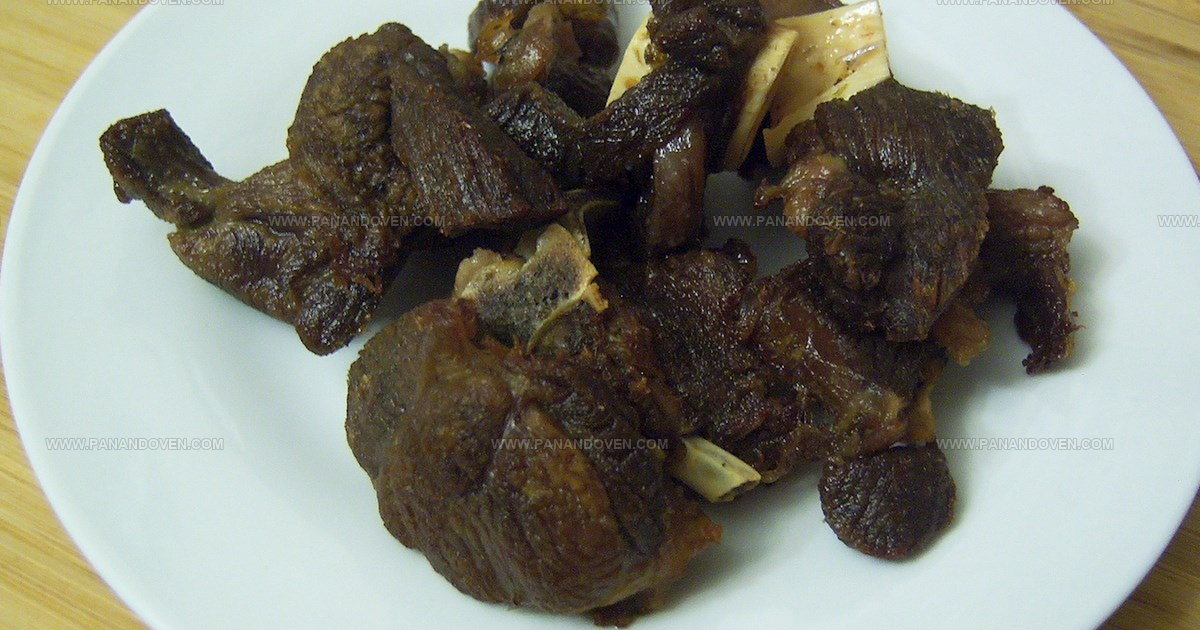
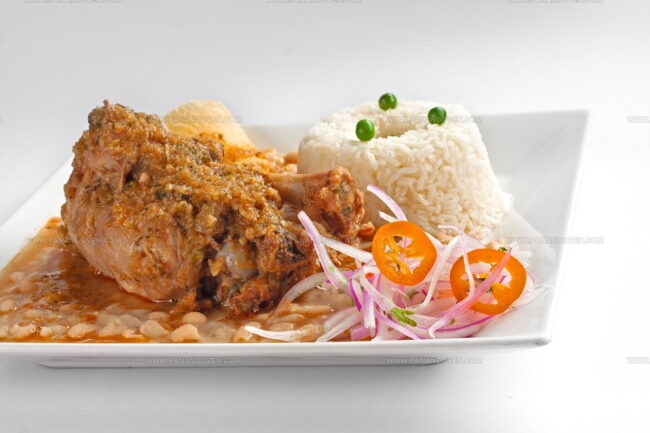
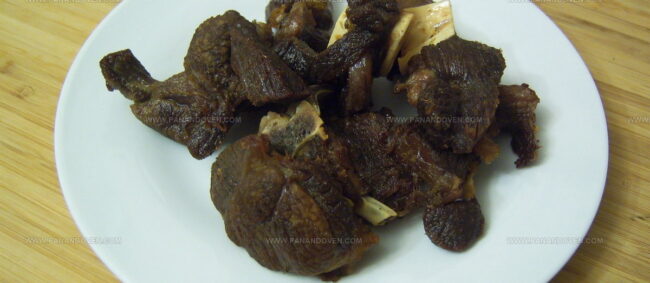
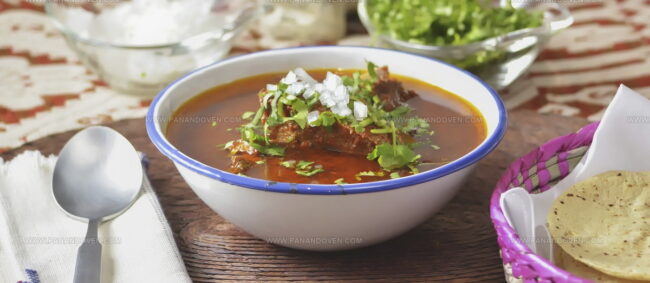
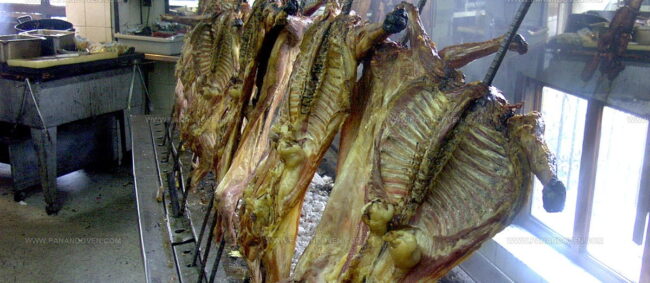
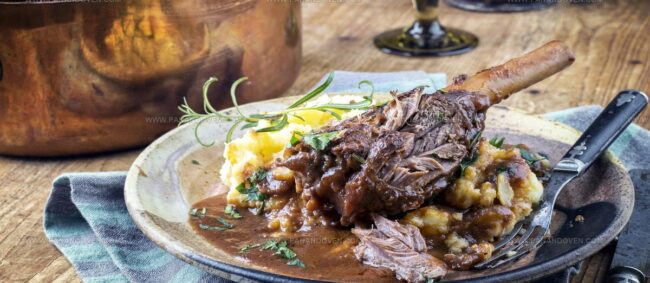
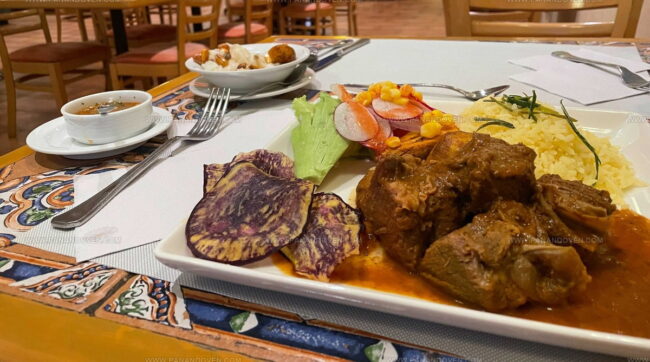
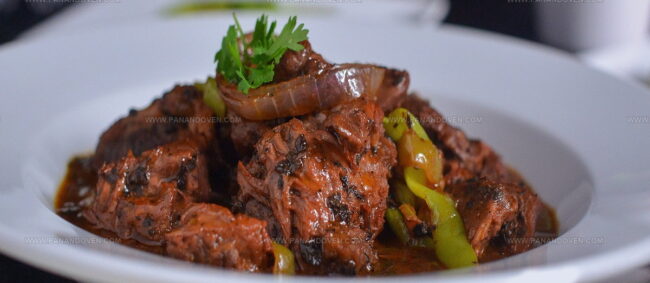
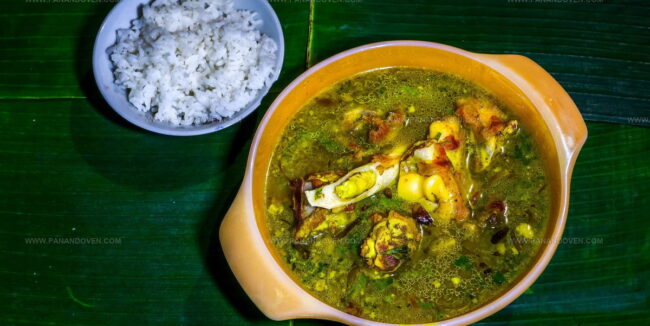
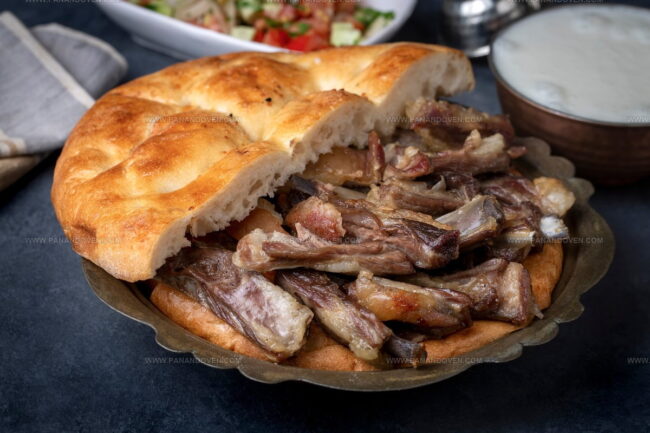
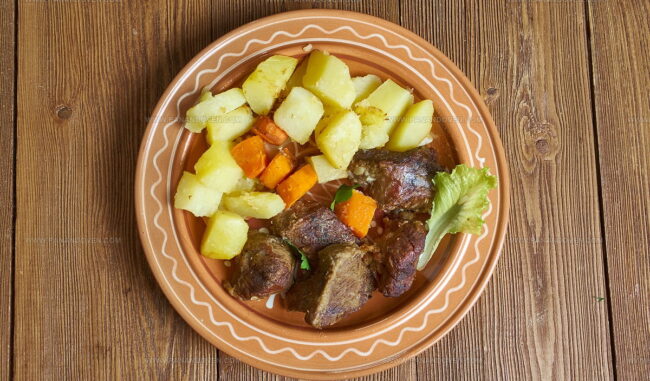
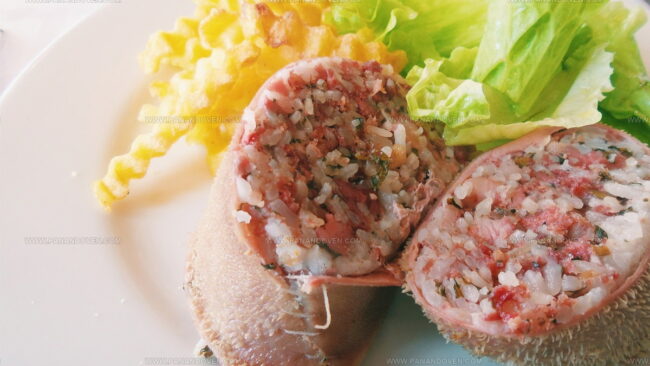
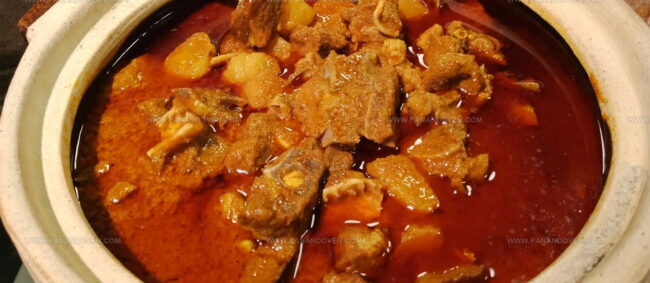
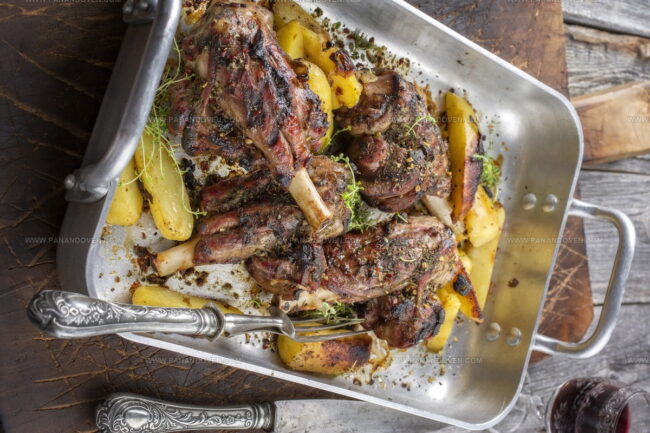
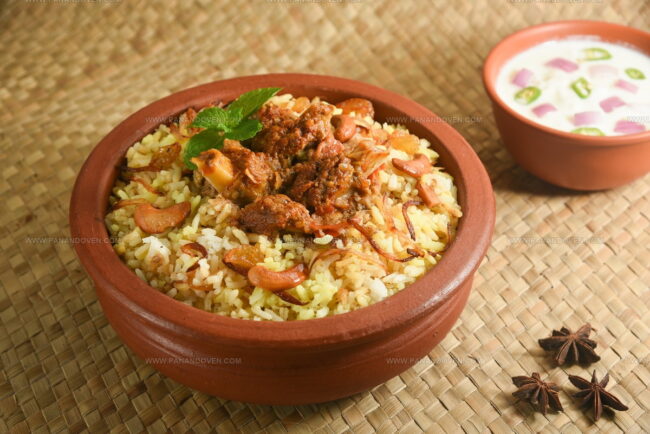
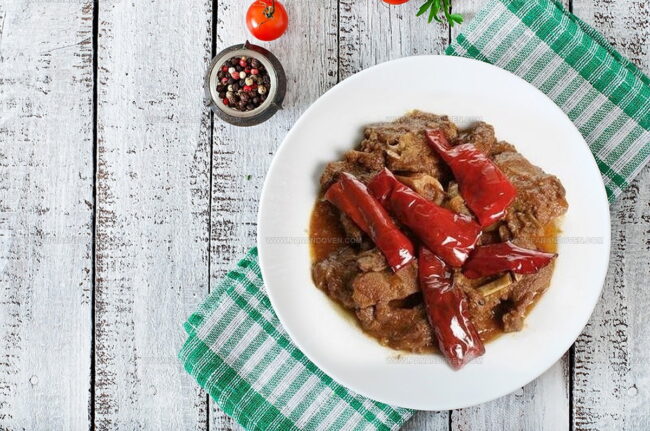
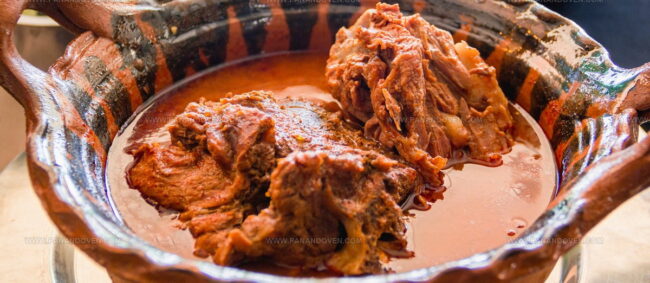
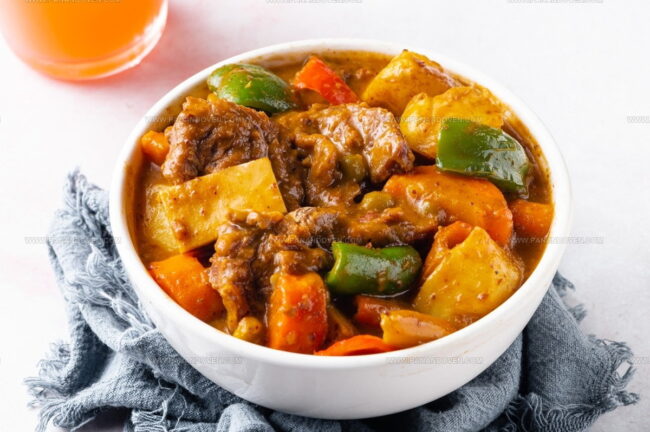
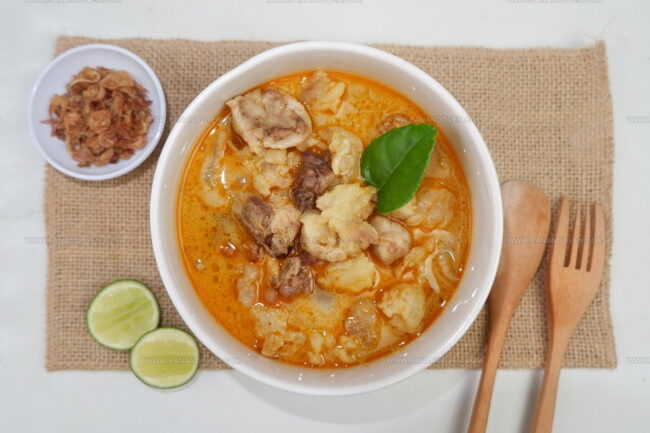
Clara Thompson
Recipe Developer & Food Educator
Expertise
Plant-based and vegetarian recipe development, Nutritional analysis and meal planning, Culinary education and workshop facilitation, Content writing with a focus on healthy living
Education
Diploma in Culinary Arts, Mt. San Jacinto College, CA
Focus: Comprehensive culinary training with an emphasis on sustainable cooking practices.
Certificate in Nutrition and Healthy Living, Cornell University (Online Program)
Focus: Understanding the principles of nutrition to create balanced and health-conscious recipes.
Clara lives where fresh ideas and fresh ingredients meet. She pairs her culinary know-how with her passion for healthy, planet-friendly cooking.
For Clara, good food should taste great, nourish your body, and feel easy to make. Her recipes highlight whole foods, colorful produce, and a deep respect for seasonal eating.